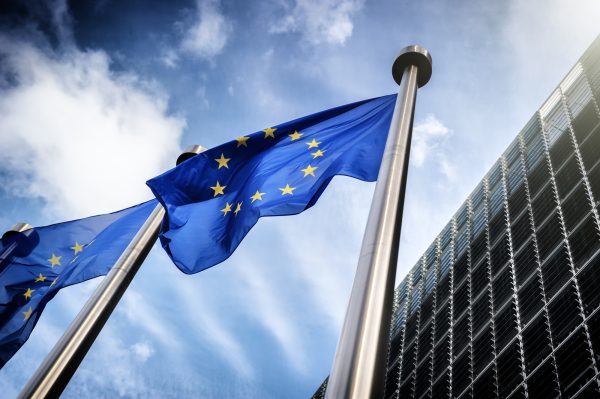Response to China or solution to a European problem? – The diplomat
[ad_1]
In a much-anticipated State of the Union address on September 15, European Commission President Ursula Von der Leyen announced the launch of the EU’s new connectivity strategy, the Global Gateway. Von der Leyen stressed that the global gateway would ensure that the EU invests more strategically around the world and “builds links, not dependencies”. The Global Gateway has been widely interpreted as a response to China’s Belt and Road Initiative (BRI), but was this new initiative really a response to China? There are two possible interpretations – one centered on China and the other on the EU itself.
First, China has been criticized for many years by the EU, US and other developed countries for, among others, creating debt dependency through various infrastructure and investment programs, in particular through the BIS. A brand new report covering 165 countries claims to reveal billions of new “hidden” debts to China. The EU’s plan for the global gateway can be seen as confirmation of growing concern over China’s bold foreign economic policy initiatives and the BIS’s own forays into Europe.
Launched in 2013, the Chinese Belt and Road Initiative (BRI) is a strategy that aims to connect Asia to Africa and Europe by sea and land in order to strengthen trade, policy coordination, infrastructure connectivity, economic growth and regional integration. As of March 2020, 138 countries had signed a memorandum of understanding with China on the BRI.
But there is an alternative interpretation for the gateway. The point is that, despite its program based on the values ​​of democracy, social security and human rights, the EU has many permanent dependencies. Many countries, particularly African but also Asian, maintain very dependent economic relations with the EU. In 2019, 35 African countries had a trade deficit with the EU, with over 65 percent of exports from African countries to the EU constituting raw materials. In return, more than 70 percent of imports from the EU to African economies were manufactured goods. This biased relationship persists despite decades of independence from European colonialism. The imbalances go beyond the economy. It was only recently Germany, for example, agreed to pay reparations for the colonial era genocide in Namibia. This month, France apologized to the massacred and ostracized Algerian soldiers after independence. The announcement of the Global Gateway can be seen as a step towards the EU to break long-standing cycles of dependency and move towards mutually beneficial relationships and true partnership.
So what is the correct interpretation? Is the Gateway an answer to China, or an internal problem that needs to be rectified? It’s probably a mix of the two. To understand why, it’s worth delving deeper into the evolution of the EU’s economic relations with Africa over time, as an example.
Currently, the EU as a region is Africa’s largest trading partner for overall trade volume, as well as for imports and exports individually. In 2018, the total volume of merchandise trade between Africa and the 27 EU Member States was around € 235 billion, accounting for over 30% of trade on the continent. Compared to the 125 billion euros in trade between China and Africa, it is clear that the EU has a strong economic presence on the continent. Trends in EU foreign direct investment (FDI) to Africa confirm this dominance. In 2018, FDI from Europe represented nearly 50 percent of total stocks in Africa, against China at just over 10 percent.
However, a more detailed comparison from 2000 to 2019 reveals some interesting trends in the EU’s relations with Africa.
Take the trade. In 2000, 38 African countries had Europe as their main export market and 30 countries had Europe as their main source of imported products. Fast forward to 2019, and 17 countries had Europe as the main export market and 10 countries had Europe as the main source of imported products. This glaring difference is indicative of the decline in economic relations between the EU and the majority of African countries. Although the EU retains its position as the continent’s largest trading partner, the individual trade relations with the EU have declined. Global trade volumes have effectively stagnated. While trade volumes with the EU have doubled since 2000, they have not kept pace with African economic growth – which has quadrupled over the same period. Similar trends appear for EU FDI to Africa.
This is where the comparison with China is really important. During the same period, despite the significant influence of the EU in many African countries – including the use of European legal systems, the use of official European languages ​​and billions of euros in aid – the China’s trade with Africa has multiplied by 20 and its FDI in Africa has increased 100 times. It doesn’t just mean that China has successfully penetrated the African economy at a rate that puts pressure on the EU. This means huge economic opportunities that Europe has somehow lost.
The above data and analysis sheds critical light on why a singular focus on China as the reason for the EU’s launch of the Global Gateway is disproportionate and limiting. The point is that there are good reasons – even without the existence of China – to seek to improve Europe’s relations with developing countries, including African and Asian countries. The data clearly indicates a stagnation in economic relations between the EU and many African countries. If the EU is to continue to be relevant to the rest of the world, it must be able to strengthen and coordinate its global trade and investment interests in a much more determined and intentional way. This is reason enough to launch an initiative like the Global Gateway. The most important task now will be to complete it.
[ad_2]

